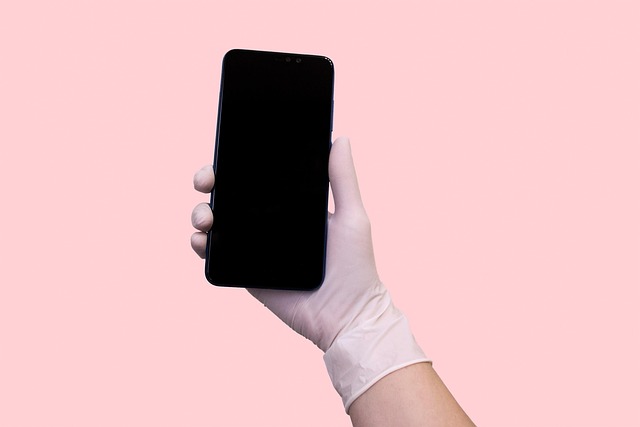Chronic diseases—such as diabetes, cardiovascular disease, cancer, and respiratory conditions—are among the leading causes of morbidity and mortality worldwide. Managing these conditions often requires long-term monitoring, lifestyle adjustments, and medical interventions. In recent years, rapid advancements in technology have revolutionized how chronic diseases are diagnosed, monitored, and treated, empowering patients and healthcare providers alike. From wearable devices to artificial intelligence (AI), these innovations are transforming chronic disease management into a more personalized, efficient, and accessible process. In this article, we’ll explore the key technological advances shaping this field and their impact on patient outcomes.
1. Wearable Health Devices: Empowering Real-Time Monitoring
Wearable devices, such as smartwatches, fitness trackers, and biosensors, have become integral tools in managing chronic diseases. These gadgets continuously monitor vital signs and other health metrics, providing real-time data that can be shared with healthcare providers or analyzed by AI algorithms.
Applications:
- Diabetes Management: Continuous glucose monitors (CGMs) like Dexcom and Freestyle Libre allow individuals with diabetes to track their blood sugar levels without frequent finger pricks. Alerts notify users of highs or lows, enabling timely interventions.
- Cardiovascular Health: Wearables like the Apple Watch and Fitbit can detect irregular heart rhythms, such as atrial fibrillation (AFib), and even perform electrocardiograms (ECGs). This early detection helps prevent complications like strokes.
- Respiratory Conditions: Smart inhalers equipped with sensors track medication usage and environmental triggers for asthma and COPD patients, improving adherence and symptom control.
Benefits:
- Enables proactive management of symptoms.
- Reduces hospital visits through remote monitoring.
- Enhances patient engagement and self-care.
2. Telemedicine: Bridging Gaps in Accessible Care
Telemedicine has gained significant traction, particularly during the COVID-19 pandemic, as a means of delivering healthcare remotely. For individuals with chronic diseases, telemedicine offers convenience, continuity, and cost savings.
Applications:
- Virtual Consultations: Patients can consult specialists from home, reducing travel time and expenses while maintaining regular check-ins.
- Remote Patient Monitoring (RPM): Devices transmit data directly to healthcare providers, who can adjust treatment plans based on real-time insights.
- Mental Health Support: Many chronic disease patients experience anxiety or depression. Teletherapy platforms provide accessible mental health care.
Benefits:
- Improves access to care, especially for rural or underserved populations.
- Facilitates ongoing communication between patients and providers.
- Lowers healthcare costs by minimizing in-person visits.
3. Artificial Intelligence (AI) and Machine Learning: Predictive Insights
AI and machine learning are transforming chronic disease management by analyzing vast amounts of data to identify patterns, predict outcomes, and recommend personalized interventions.
Applications:
- Predictive Analytics: Algorithms analyze patient data to forecast disease progression or complications, allowing for preventive measures. For example, AI models can predict the likelihood of diabetic retinopathy or heart failure exacerbations.
- Personalized Treatment Plans: AI tailors therapies based on genetic profiles, lifestyle factors, and historical data, optimizing effectiveness.
- Chatbots and Virtual Assistants: AI-powered tools answer patient queries, remind them to take medications, and guide them through symptom management.
Benefits:
- Enhances precision medicine approaches.
- Reduces human error in diagnosis and treatment planning.
- Streamlines administrative tasks, freeing up clinicians’ time.
4. Mobile Health Apps: Putting Control in Patients’ Hands
Mobile applications designed for chronic disease management empower patients to take an active role in their health. These apps often integrate with wearables and other digital tools to create comprehensive health ecosystems.
Applications:
- Medication Reminders: Apps like MyTherapy and Medisafe ensure patients adhere to their prescribed regimens.
- Symptom Trackers: Platforms like Flaredown help users log symptoms, identify triggers, and share reports with doctors.
- Nutrition and Fitness Guidance: Apps like MyFitnessPal and Noom offer tailored dietary advice and activity tracking for weight management and metabolic health.
Benefits:
- Encourages consistent self-monitoring and accountability.
- Provides actionable insights through data visualization.
- Simplifies communication between patients and healthcare teams.
5. Genomics and Precision Medicine: Targeted Therapies
Advances in genomics have paved the way for precision medicine, which uses genetic information to develop highly targeted treatments for chronic diseases.
Applications:
- Oncology: Genetic testing identifies mutations driving cancer growth, enabling therapies that specifically target those mutations.
- Pharmacogenomics: Determines how individuals metabolize medications, ensuring safer and more effective prescriptions.
- Rare Diseases: Genomic sequencing uncovers underlying causes of rare conditions, guiding treatment strategies.
Benefits:
- Minimizes trial-and-error in treatment selection.
- Increases efficacy while reducing side effects.
- Offers hope for previously untreatable conditions.
6. Robotics and Automation: Enhancing Rehabilitation
Robotic technologies are increasingly used in rehabilitation settings to assist patients recovering from chronic conditions or surgeries.
Applications:
- Exoskeletons: Robotic suits aid mobility-impaired individuals in regaining movement and independence.
- Rehabilitation Robots: Devices like robotic arms or gait trainers support physical therapy exercises for stroke survivors or those with spinal cord injuries.
- Surgical Assistance: Robotic systems like the da Vinci Surgical System enable minimally invasive procedures, reducing recovery times and complications.
Benefits:
- Accelerates recovery and improves functional outcomes.
- Reduces strain on caregivers and therapists.
- Provides precise, repeatable movements for optimal results.
7. Blockchain Technology: Securing Health Data
Blockchain technology ensures secure storage and sharing of sensitive health information, addressing privacy concerns and fostering trust in digital health solutions.
Applications:
- Patient Records: Immutable ledgers store electronic health records (EHRs), preventing unauthorized access and tampering.
- Supply Chain Transparency: Tracks the authenticity and distribution of pharmaceuticals, combating counterfeit drugs.
- Clinical Trials: Facilitates transparent and verifiable research processes.
Benefits:
- Protects patient confidentiality.
- Enhances interoperability between healthcare systems.
- Builds public confidence in digital health initiatives.
Challenges and Considerations
While technological advances hold immense promise, several challenges must be addressed:
- Cost Barriers: High-tech solutions may not be affordable for all patients, exacerbating disparities in care.
- Data Privacy: Ensuring the security of sensitive health data remains a top priority.
- Digital Literacy: Not all patients are comfortable using advanced technologies, requiring education and support.
- Regulatory Hurdles: New tools must undergo rigorous testing and approval before widespread adoption.
